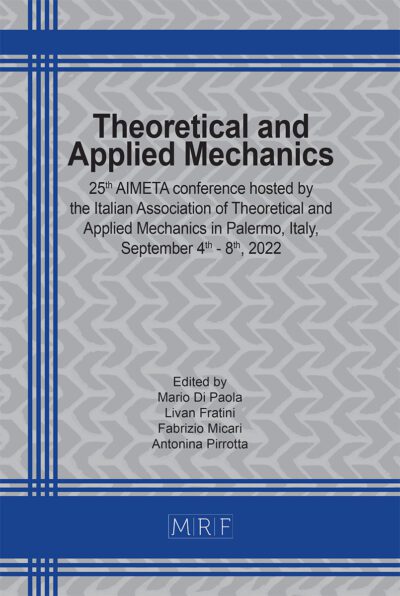Evaluating the impact of 3D constitutive models on predictive performance of xgboost for material parameter identification
Pedro Prates, Dário Mitreiro, Armando Marques, André Pereira, António Andrade-Campos
Abstract. This study explores the impact of different 3D constitutive models on the predictive performance of machine learning algorithms, focusing on eXtreme Gradient Boosting (XGBoost) for material parameter identification. Early work with the Hill’48 yield criterion demonstrated strong predictive performance. However, more advanced criteria, such as the yield criterion developed by Cazacu, Plunkett and Barlat (CPB’06), have posed challenges, significantly degrading the machine learning model’s performance. The study highlights the need to address the interaction between constitutive models and machine learning methods in material parameter identification. XGBoost models were trained using material datasets generated from biaxial tensile tests on a cruciform sample with the Hill’48 and CPB’06 yield criteria to compare their influence on predictive performance. The poor performance obtained with the latter yield criterion highlights the need for optimized training strategies or potentially larger, more diverse datasets when dealing with complex constitutive models.
Keywords
Machine Learning, Material Parameter Identification, Yield Criterion
Published online 5/7/2025, 8 pages
Copyright © 2025 by the author(s)
Published under license by Materials Research Forum LLC., Millersville PA, USA
Citation: Pedro Prates, Dário Mitreiro, Armando Marques, André Pereira, António Andrade-Campos, Evaluating the impact of 3D constitutive models on predictive performance of xgboost for material parameter identification, Materials Research Proceedings, Vol. 54, pp 1597-1604, 2025
DOI: https://doi.org/10.21741/9781644903599-172
The article was published as article 172 of the book Material Forming
![]() Content from this work may be used under the terms of the Creative Commons Attribution 3.0 license. Any further distribution of this work must maintain attribution to the author(s) and the title of the work, journal citation and DOI.
Content from this work may be used under the terms of the Creative Commons Attribution 3.0 license. Any further distribution of this work must maintain attribution to the author(s) and the title of the work, journal citation and DOI.
References
[1] R. Hill, A theory of the yielding and plastic flow of anisotropic metals, Proc. R. Soc. London, 67 (1948) 281–297. https://doi.org/10.1098/rspa.1948.0045
[2] O. Cazacu, B. Plunkett, F. Barlat, Orthotropic yield criterion for hexagonal closed packed metals, Int. J. Plast. 22 (2006) 1171-1194. https://doi.org/10.1016/j.ijplas.2005.06.001
[3] T. Chen, C. Guestrin, XGBoost: A scalable tree boosting system, in Proceedings of the 22nd ACM SIGKDD International Conference on Knowledge Discovery and Data Mining, 2016, 785-794. https://doi.org/10.48550/arXiv.1603.02754
[4] P. Prates, J. Pinto, J. Marques, J. Henriques, A. Pereira, A. Andrade-Campos, Influence of data filtering and noise on the calibration of constitutive models using machine learning techniques, Mater. Res. Proc. 41 (2024) 1807-1816. https://doi.org/10.21741/9781644903131-200
[5] J. Martins, A. Andrade-Campos, and S. Thuillier, Calibration of anisotropic plasticity models using a biaxial test and the virtual fields method, Int. J. Solids Struct. 172 (2019) 21–37. https://doi.org/10.1016/j.ijsolstr.2019.05.019
[6] Dassault Systèmes. Abaqus 2017 documentation, 2017.
[7] H. Swift, Plastic instability under plane stress, J. Mech. Phys. Solids, 1 (1952) 1–18. https://doi.org/10.1016/0022-5096(52)90002-1













